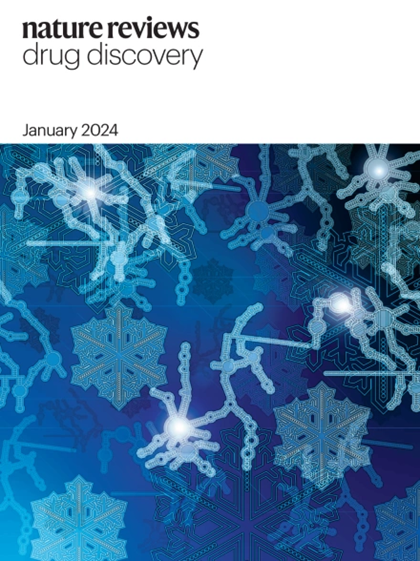Therapeutic targeting of senescent cells in the CNS
IF 122.7
1区 医学
Q1 BIOTECHNOLOGY & APPLIED MICROBIOLOGY
引用次数: 0
Abstract
Senescent cells accumulate throughout the body with advanced age, diseases and chronic conditions. They negatively impact health and function of multiple systems, including the central nervous system (CNS). Therapies that target senescent cells, broadly referred to as senotherapeutics, recently emerged as potentially important treatment strategies for the CNS. Promising therapeutic approaches involve clearing senescent cells by disarming their pro-survival pathways with ‘senolytics’; or dampening their toxic senescence-associated secretory phenotype (SASP) using ‘senomorphics’. Following the pioneering discovery of first-generation senolytics dasatinib and quercetin, dozens of additional therapies have been identified, and several promising targets are under investigation. Although potentially transformative, senotherapies are still in early stages and require thorough testing to ensure reliable target engagement, specificity, safety and efficacy. The limited brain penetrance and potential toxic side effects of CNS-acting senotherapeutics pose challenges for drug development and translation to the clinic. This Review assesses the potential impact of senotherapeutics for neurological conditions by summarizing preclinical evidence, innovative methods for target and biomarker identification, academic and industry drug development pipelines and progress in clinical trials. With ageing global populations, cellular senescence is gaining increasing attention as a therapeutic target. In their Review, Orr and colleagues discuss ongoing research into senescence in the central nervous system, including promising targets and drugs in development that aim to clear senescent cells or modulate their senescence-associated secretory phenotype.


中枢神经系统衰老细胞的治疗靶点
随着年龄的增长、疾病和慢性病的发生,衰老细胞在人体内不断积累。它们对包括中枢神经系统(CNS)在内的多个系统的健康和功能产生负面影响。针对衰老细胞的疗法(广义上称为衰老疗法)最近成为中枢神经系统潜在的重要治疗策略。前景看好的治疗方法包括使用 "衰老分解剂 "解除衰老细胞的促生存途径,从而清除衰老细胞;或使用 "衰老形态学药物 "抑制衰老相关分泌表型(SASP)的毒性。在率先发现第一代衰老分解剂达沙替尼和槲皮素之后,又发现了数十种其他疗法,还有几个前景看好的靶点正在研究中。尽管衰老疗法可能带来变革,但目前仍处于早期阶段,需要进行全面测试,以确保可靠的靶点参与、特异性、安全性和有效性。中枢神经系统作用的衰老治疗药物对大脑的穿透力有限,并有潜在的毒副作用,这给药物开发和临床转化带来了挑战。本综述通过总结临床前证据、靶点和生物标记物鉴定的创新方法、学术界和业界的药物开发管线以及临床试验进展,评估了老年疗法对神经系统疾病的潜在影响。
本文章由计算机程序翻译,如有差异,请以英文原文为准。
求助全文
约1分钟内获得全文
求助全文
来源期刊

Nature Reviews. Drug Discovery
医学-生物工程与应用微生物
CiteScore
137.40
自引率
0.30%
发文量
227
期刊介绍:
Nature Reviews Drug Discovery is a monthly journal aimed at everyone working in the drug discovery and development arena.
Each issue includes:
Highest-quality reviews and perspectives covering a broad scope.
News stories investigating the hottest topics in drug discovery.
Timely summaries of key primary research papers.
Concise updates on the latest advances in areas such as new drug approvals, patent law, and emerging industry trends and strategies.
 求助内容:
求助内容: 应助结果提醒方式:
应助结果提醒方式:


